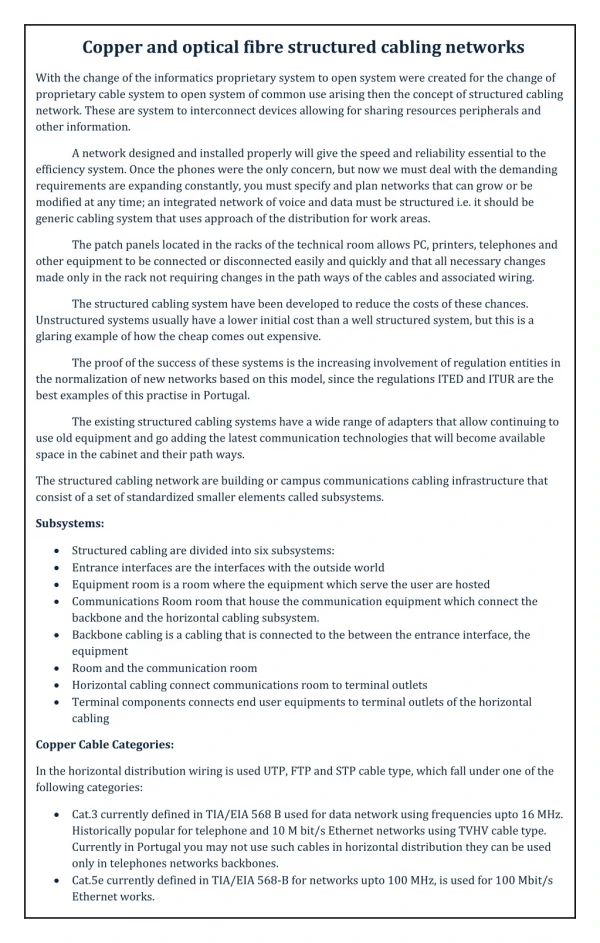Metro Ethernet Industry Global metro Ethernet market valued at US$ 28.46 Bn in 2017 and poised to reach US$ 88.51 Bn by 2026, expanding at CAGR of 13.51% across the forecast period from 2018 to 2026. Metro Ethernet networks have occurred as a viable solution for several organizations seeking enhanced network management and communication. Such technology is rapidly penetrating in several applications as an alternative to cable modem and Asymmetric Digital Subscriber Line (ADSL). With continual penetration of internet services worldwide, the demand for Internet bandwidth and uninterrupted services is estimated to remain high in the coming years, thereby driving the Metro Ethernet market growth worldwide. Metro Ethernet networks have unlocked the promising avenue to profits for telecommunication as well as internet service providers. In addition, with rising popularity of high-speed networks, the overall prices (per mile) have declined significantly over the past few years. This is another prominent factor in fueling market growth. Browse the full report atu00a0https://www.credenceresearch.com/report/metro-ethernet-market Market Insightsu00a0 Metro Ethernet refers to network that bridges geographically separated enterprise Local Area Networks (LANs) while connecting across Wide Area Networks (WANs) that are generally owned by service providers. Metro Ethernet is primarily poised by characteristics such as high bandwidth, relative simplicity and low-cost switches among several others. The first span of network that connects subscribers and businesses to the WAN has always been critical area for delivering data services as it has been built to enable the availability and reliability needs of communication. Ethernet technology has widely accepted in several enterprise deployments and millions of Ethernet ports have already been installed. Presently the cost of 100 Mbps interface for enterprise switches is less than US$ 50 and further expected to get reduced in following years. These are laid with an intention of reducing efforts, cost and time in future as well in case the requirement of bandwidth increases. Since the past few years, metro Ethernet networks have emerged as an additional source of income for the service providers. Apart from telecommunication/internet infrastructure providers, telecommunication carriers are also investing significantly for additional business requirements and reducing backhaul costs as it provides rapid provisioning on demand, plummeting the time to market and managing capital expenditure. Metro Ethernet encompasses various fiber mode types, which are segmented as single mode module and multi-mode module. In 2017, the value contribution from multi-mode fibers segment was highest in the global metro Ethernet market. The segment accounted for over 3/4th of the global metro Ethernet market value in the same year. Rapidly growing digitalization across the world has altered the connection technology atmosphere pertaining to increasing number of connected individual components and products. Similarly increasing penetration of connected components in several applications require cumulative volume of data that needs to transmit at higher speeds. As a result, service providers are increasingly adopting Ethernet power cables, which combine data cables, power cables and even hoses for pneumatics & hydraulics in a single sheath. In addition, periodic advancement in communication technologies (such as 3G, 4G LTE and 5G), consumersu2019 expectation for high-speed internet has increased dramatically. This makes it highly challenging for service providers to keep up with rapidly growing internet bandwidth demand. Inquiry Before Buying:u00a0https://www.credenceresearch.com/inquiry-before-buying/59613 Report Scope by Segments Metro Ethernet market report provides market size and estimates based on market dynamics and key trends observed in the industry. The report provides a holistic view of global metro Ethernet market based on fiber mode type, end-use and geography. Key segments covered in the report are as follows: Fiber Mode Type Segment (2016u20132026; US$ Bn) Single-mode Module Multi-mode Module End-use Segment (2016u20132026; US$ Bn) ISPs & Telecom. Banking, Finance Services & Insurance (BFSI) Information technology Education Manufacturing & logistics Hospitality & Retail Healthcare Geography Segment (2016u20132026; US$ Bn) North America United States Rest of North America Europe United Kingdom France Germany Rest of Europe Asia Pacific (APAC) Japan China India Rest of APAC Rest of the World (RoW) Latin America Middle East and Africa (MEA) Key questions answered in this report What was the market size of metro Ethernet in 2017 and forecast up to 2026? Which is the largest regional market for metro Ethernet network? What are the key market trends observed in the metro Ethernet market? Which is the most promising fiber mode type and end-use in metro Ethernet market? Who are the key players leading the market? What are the key strategies adopted by the leading players in market? What are the key Internet usage trends across different geographies and sub-geographies? Get Sample Page Now:u00a0https://www.credenceresearch.com/sample-request/59613 Blog:u00a0http://www.allaboutnewstoday.com/
★
★
★
★
★
40 views • 3 slides













